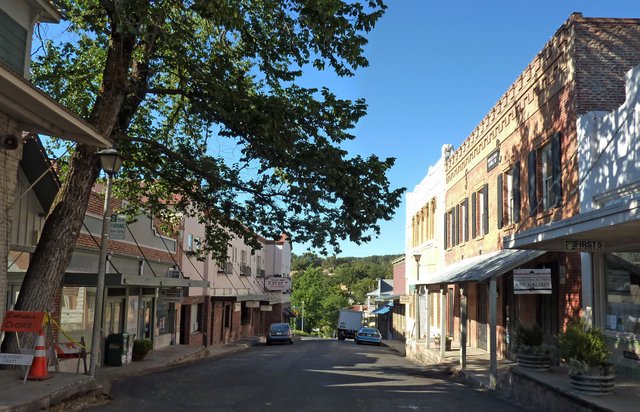San Andreas, CA…The Calaveras Visitors Bureau announced that this weekend’s opening of a new Hollywood film titled “San Andreas” may call attention to the Gold Rush town of the same name. The film depicts a fictional version of the San Andreas fault, which runs through western California and is unrelated to the town of San Andreas in Calaveras County, situated in the east. Ironically enough, San Andreas the town, is so seismically insignificant that a recent search of the U.S. Geological Survey’s website at www.usgs.gov showed that it barely rated any kind of mention, besides issues connected with groundwater.
So where does this confusing nomenclature come from? Simply this: the town was named after San Andrés, the patron saint of Spain. Mexicans first discovered gold here, and by the early 1850s between 1,000 and 1,500 miners were working in the area. In 1854 extensive placer deposits were discovered in an old riverbed 150 feet below the surface of the earth.
As the County seat, San Andreas is the center of commerce, education and services for Calaveras County. The town also boasts a small, delightful historic district that captures the charm of earlier eras and houses the Calaveras County Archives and Calaveras County Museum Complex.
With no noticeable subterranean shaking, you can still get your thrills underground at nearby California Cavern, State Historic Landmark, in Mountain Ranch. As the state’s first show cave, opened in 1849 or 1850 (stories vary), early Gold Rush hopefuls used the cave for entertainment – in some strange ways that we wouldn’t ever consider today. Current walk tours explore passages and chambers detailing this interesting social history of the cave’s many uses including as a place for secret political meetings, a hideout for Black Bart, a wedding ceremony venue, and one of the most unusual liquor bar locations. Today, extended wild cave expeditions are also offered, taking visitors far beyond the walking tour areas of the cave, to climb, crawl and slither through deep recesses of mud, underground lakes, ravines decorated overhead with sparkling, crystalline formations on 2 and 4-hour adventure spelunking trips.
For more information on the Calaveras Visitors Bureau, please visit www.gocalaveras.com or email the Calaveras Visitors Bureau at info@gocalaveras.com
###



